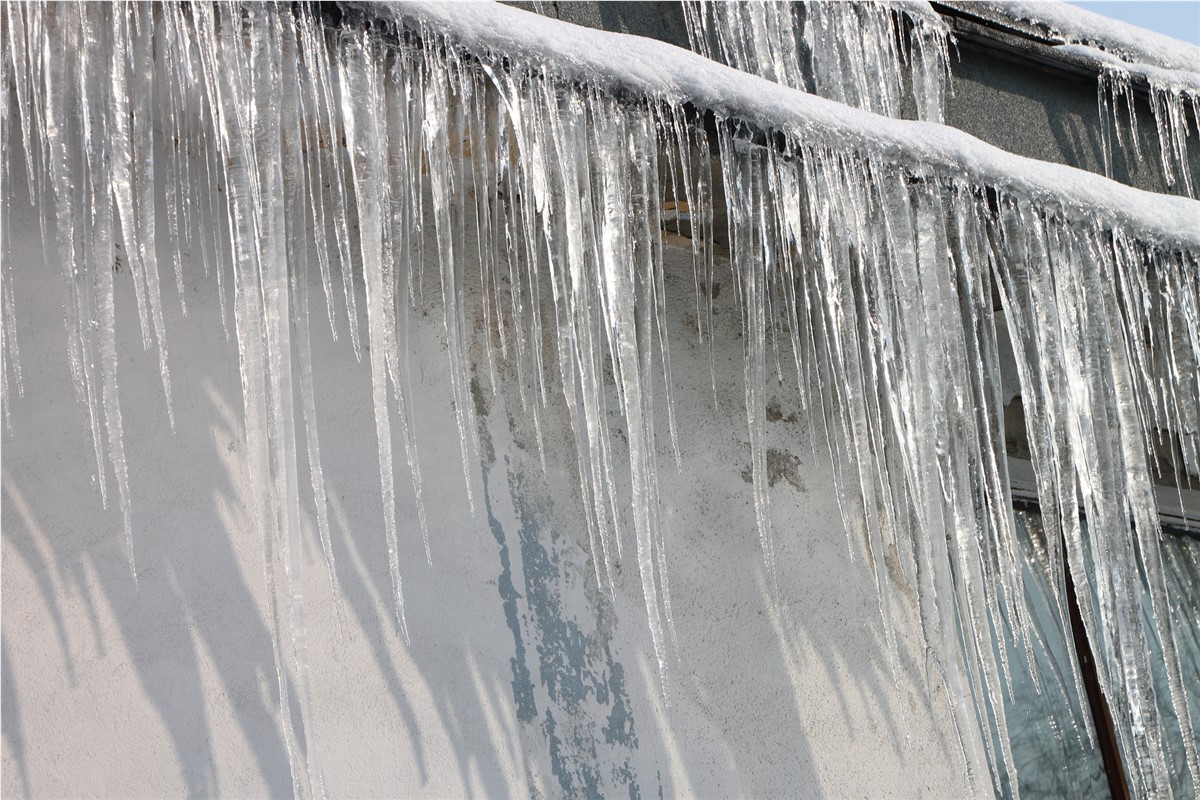
The first snowfall of winter sure is a sight to be seen. The snow at first soft and fluffy, and the icicles hanging from your roof are quite a sight to behold. For many, it’s a picturesque opportunity to take to social media. But as we all know, the winters here in Michigan are not shy of crazy. However, to the experienced team at Kearns Brothers, these icicles and heavy snowfall serve as a harbinger of a more concerning problem: the looming threat of ice dam damage.
Ice dam formation occurs when snow melts on your roof during the day and then proceeds to free at night. Following multiple days of this melting and freezing process, it's typical for liquid water and ice to find its way beneath the shingles, eventually infiltrating the attic and causing water damage to your home's ceilings, walls, and belongings.
Why Do Ice Dams Form?
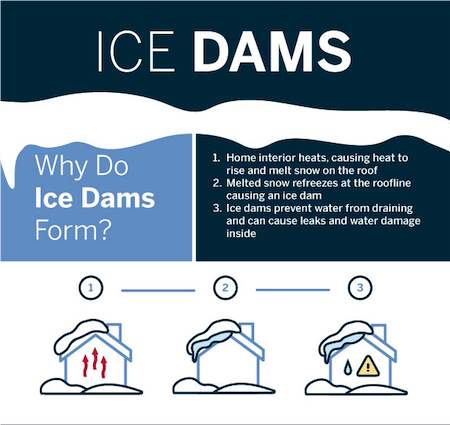
As the temperatures begin to fall, and we start getting less sunny days and more cloudy days, it's natural for us to turn on the heat in our home. It is important to note that as the interior of your home warms up, the underside of your roof should remain cool. This may seem counterintuitive, but with modern ventilation systems, the eaves pull in cool air and the ridge vent releases the warm air.
If warm air is trapped in your attic, the warmth may cause ice to form along the edges of your house's eaves. Over time, this ice can build up into a bigger dam and seep beneath the shingles, potentially causing damage to both your roof and home.
If you notice that your attic is trapping heat, it's essential to investigate possible issues like insufficient insulation or blocked soffit vents. These issues, among others, could be the main reasons for trapped heat in your attic.
Ice Dam Prevention
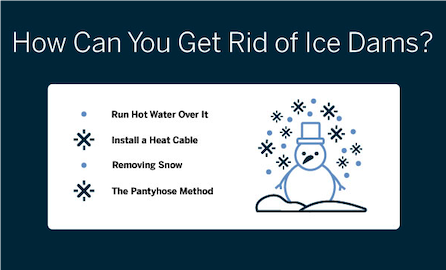
Ice dams can pose significant challenges for your roof, potentially causing shingle damage, interior leaks that can affect light fixtures exterior wall problems, and even issues with your gutters. Nobody wants to deal with costly repairs down the line, do they? That's why it's essential to learn how to address these troublesome ice dams as soon as possible.
When you're confronted with the question of "how to remove ice dams," always approach the situation with great care to avoid any harm to your shingles, gutters, or other parts of the roof. Fixing ice dams for good can be a complex task, so don't hesitate to seek assistance from a professional at your preferred roofing company.
Here are a few safe methods to eliminate ice dams on your roof:
Run Hot Water Over It: Gently melt the ice dam using hot water. Be cautious not to damage your roofing materials in the process.
Install a Heat Cable: Consider installing a heat cable system to prevent ice dams from forming in the first place. Be aware that, even though heat cables are a great step to stay ahead of the game, they are not the best option for a dam that’s already exists.
Use a Roof Rake: Remove snow on your roof to reduce the risk of ice dams forming.
Pantyhose method: Yes, you read that right. Fill the leg of a discarded pair of pantyhose with a calcium chloride ice melter. Then, you’ll want to lay the pantyhose on the roof so that it lays across the ice dam and over the gutter. Although this method sounds silly, the calcium chloride will produce enough heat, melting the snow and ice, creating a channel for it to flow into the gutters or off your roof.
Be sure not to use standard rock salt because sodium chloride can damage shingles, rust nail heads, gutters, and other metals located on your roof.
Problems That Ice Dams Cause and Fixing Ice Dams Permanently
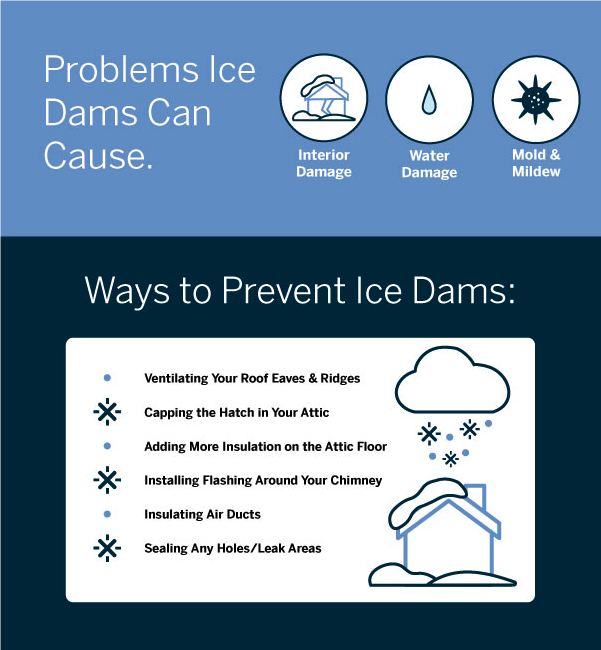
After discussing methods for removing ice dams, it's crucial to delve into prevention strategies. While you might initially blame your gutters, it's essential not to rush to conclusions. Insufficient attic insulation could be the root cause of roof ice dams. Here are some top long-term prevention methods:
Seal the attic hatch: Even minor openings in your attic can allow significant warm air loss. Cover any unsealed sections with weather-stripped caps made from foil-faced foam board, secured with aluminum tape.
Enhance insulation and ventilation: Increasing insulation levels helps keep the temps where it should be.
Replace flashing around your chimney
Insulate air ducts within the attic - Warm air could be escaping into the attic when it shouldn’t be.
Utilize heated cables: These, also known as roof heating cables or heat tape, are highly effective for ice dam prevention. They are installed along roof edges to minimize or eliminate ice dams.
Seal any gaps or areas prone to air leaks- Warm air rises and any gaps that lead into the attic are prime places for warm air to enter.
Explore additional prevention measures tailored to your specific situation.
By implementing these methods, you can substantially reduce the risk of ice dam formation on your roof.
Get in Touch with Our Roofers to Learn More About Keeping Your Roof in Top Shape
Our expertise lies in both the maintenance of your roof's excellent condition and preparing it to withstand winter challenges. When it comes to addressing any roof damage you may face this winter, you can trust the skilled professionals at Kearns Brothers. Feel free to contact us for assistance without hesitation!
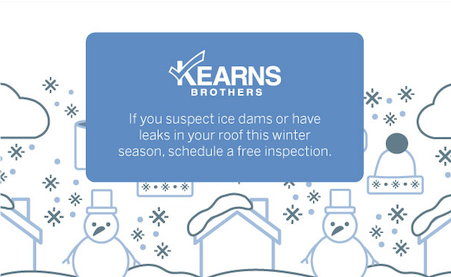
Tags
Subscribe to Kearns Brothers's Blog


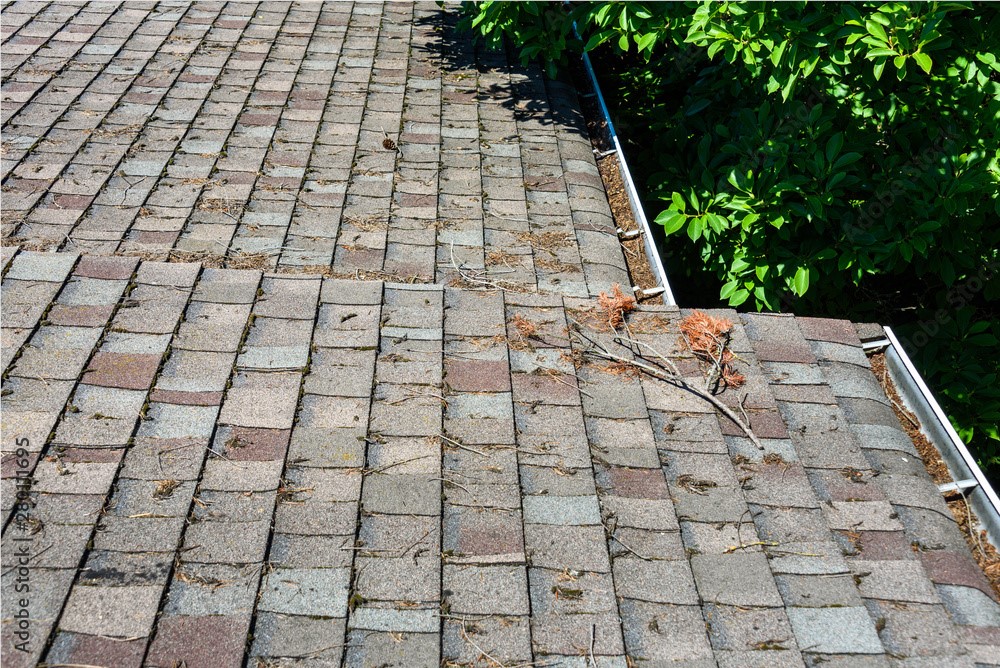
Comments